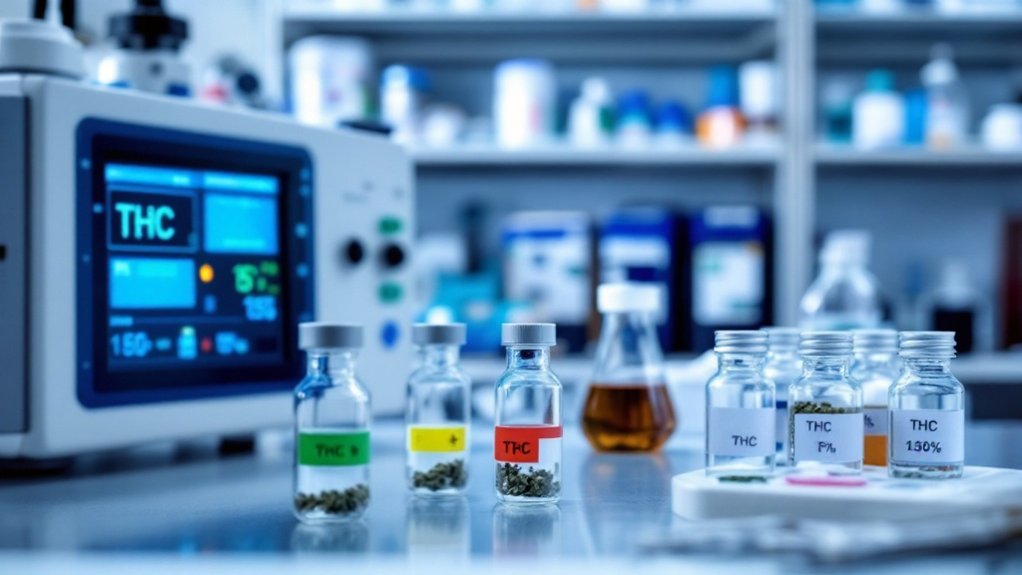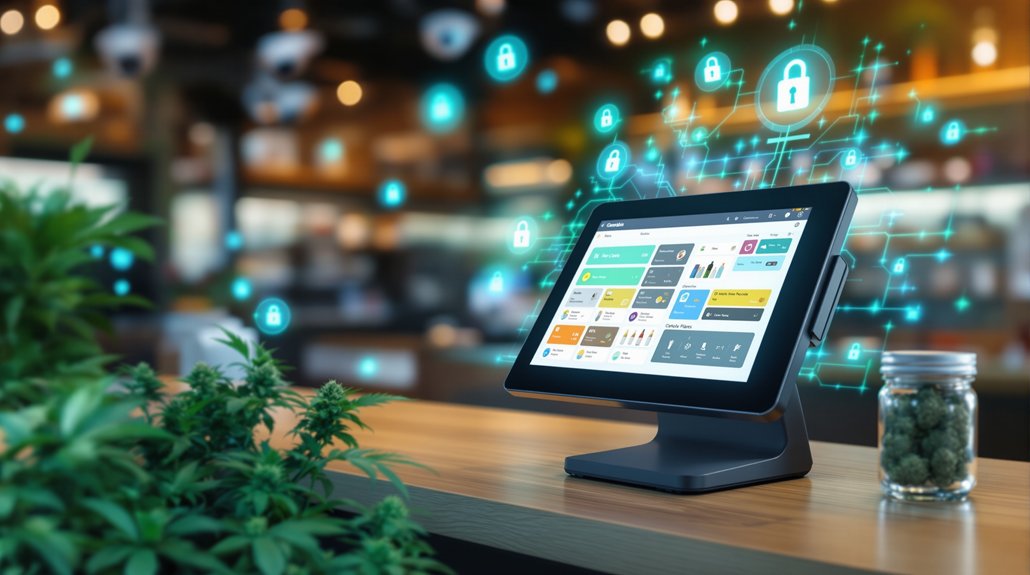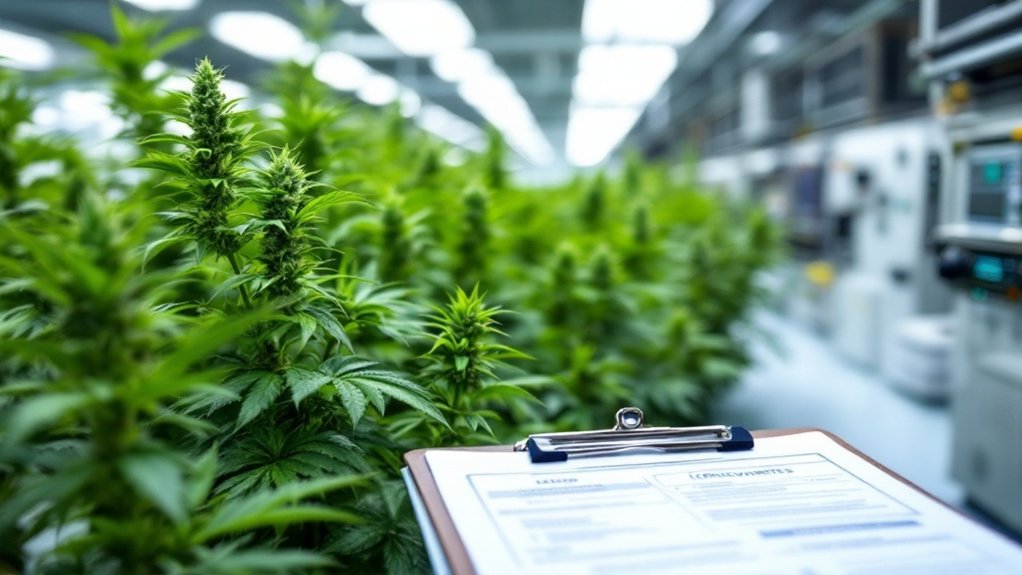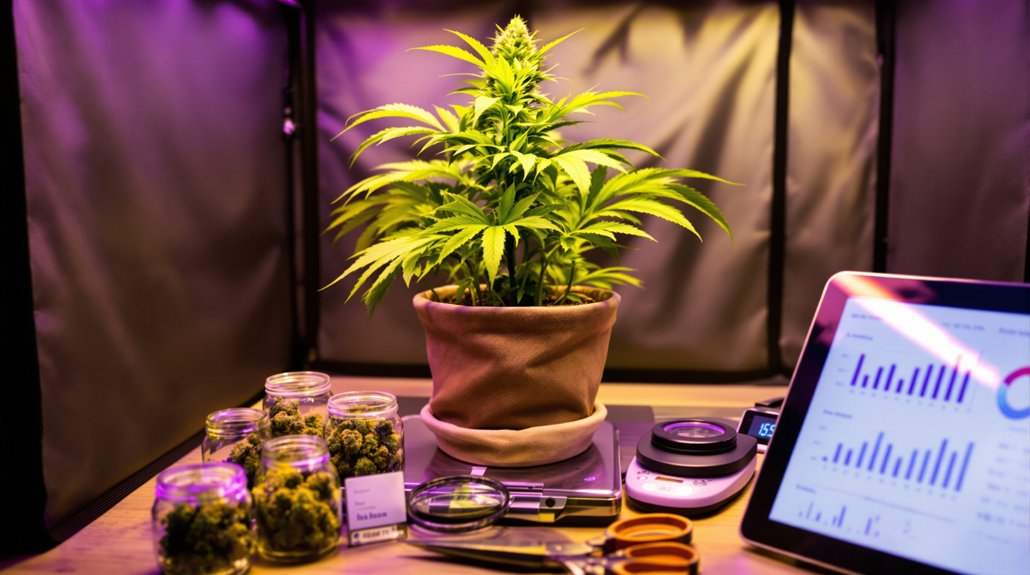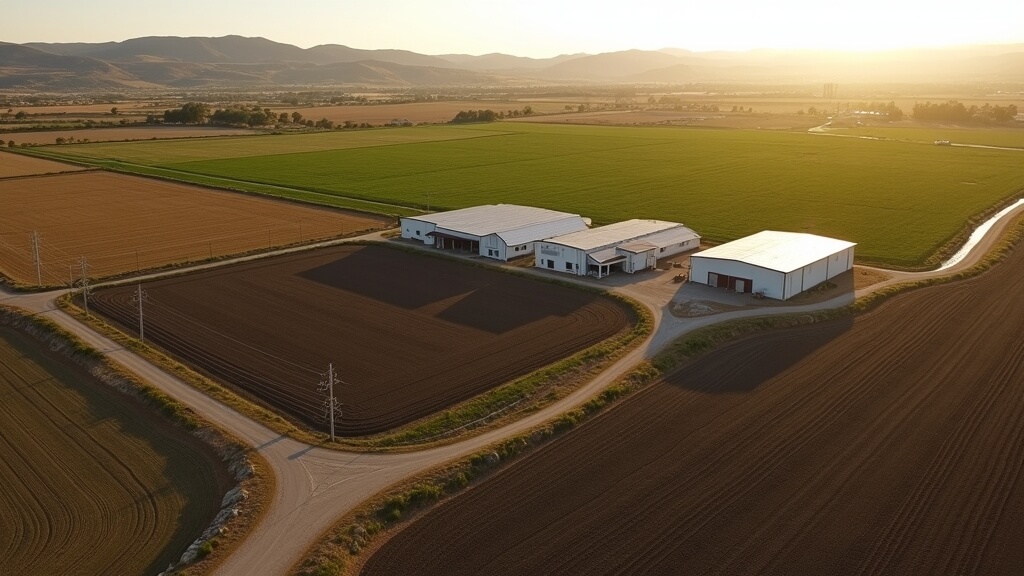Cannabis testing labs show significant variability, with potency results differing by up to 25% between facilities. Well-performing labs maintain THC and CBD measurements within ±10-20% variance, while over 85% of products contain less THC than labeled. Red flags include sudden potency increases, consistently higher-than-average THC readings, or lack of accreditation. Consumers should watch for these warning signs to identify reliable laboratories that prioritize accuracy over commercial pressures. Further exploration reveals how testing methods impact product integrity.
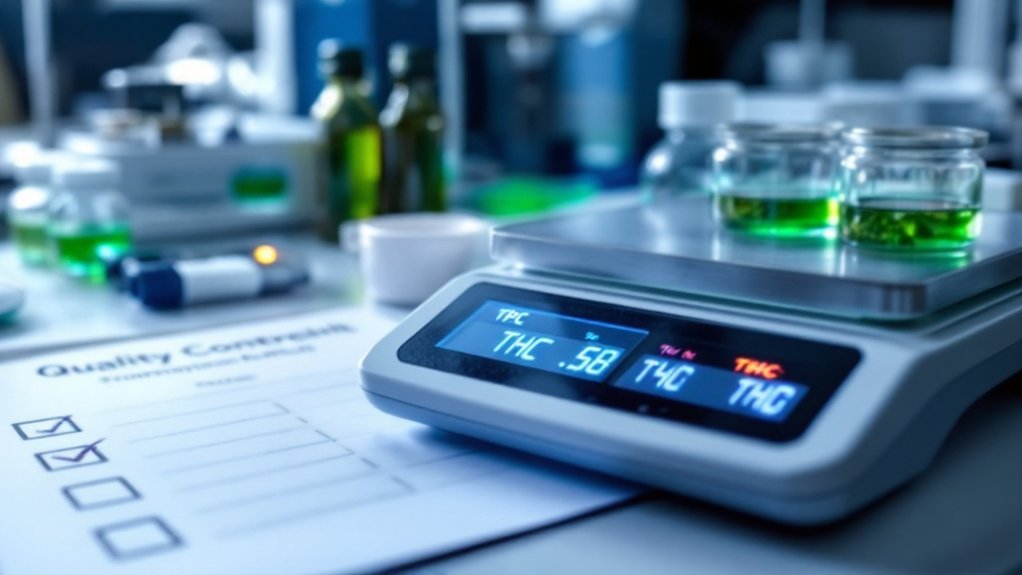
When cannabis products reach consumers with potency labels or safety certifications, how much confidence should one place in these laboratory results? Recent data suggests that while cannabis testing has improved over time, significant inconsistencies remain within the industry. Accredited testing laboratories have shown measurable improvement, with accurate pesticide detection increasing from 89% in 2019 to 94% by 2023, coinciding with an increase in analytical chemists with advanced degrees entering the field.
The reliability of potency testing exhibits notable variability between laboratories. Most reputable labs typically report THC and CBD values within ±20% of each other, with better performers achieving ±10% consistency. This variance becomes concerning when examining product labeling accuracy; one extensive study found that more than 85% of cannabis products contained observed THC levels at least 15% lower than their highest reported label values. These discrepancies point to systemic issues that extend beyond normal measurement uncertainty. Modern cannabis strains often contain THC levels of 20% or more, making accurate potency testing increasingly important for both recreational and medical users. Furthermore, companies that implement advanced quality control protocols can better ensure accuracy and consistency in test results.
Lab testing inconsistency undermines consumer trust when most cannabis products contain significantly less THC than their labels claim.
Several factors contribute to measurement variability in cannabis testing. Sample inhomogeneity presents a fundamental challenge, as cannabinoid distribution within plant material is rarely uniform. Laboratories employ different analytical techniques, instruments, and sample preparation methods, each introducing potential variance. Environmental conditions during storage and transportation may also alter sample characteristics before analysis occurs.
The phenomenon of “lab shopping,” where producers seek facilities offering favorable results, undermines testing integrity. Some operators have been observed switching laboratories and subsequently reporting sudden, significant increases in potency values. This practice represents a particularly concerning red flag that suggests potential data manipulation rather than actual product improvement. The lack of universally standardized protocols creates opportunities for results to be manipulated while technically remaining within regulatory parameters.
Industry efforts to improve reliability include proficiency “ring tests” that compare results across multiple laboratories. These assessments reveal that while most labs perform within acceptable accuracy limits, a minority consistently produce outlier results that deviate by more than 25% from expected averages. Accreditation bodies and regulatory agencies use these comparative data to establish benchmarks and drive improvements in laboratory performance. Colorado’s testing landscape highlights this issue, with approximately 70% of samples testing significantly below their labeled THC potency values.
As the cannabis industry continues to mature, enhanced regulatory oversight and standardized methodologies are developing at different rates across jurisdictions. Third-party accreditation provides a baseline for quality assurance but does not guarantee perfect accuracy. Ongoing scrutiny, retrospective analysis of test results, and continuous improvement of analytical methods remain essential for ensuring consumer safety and product integrity.
Frequently Asked Questions
What Certifications Should a Reputable Cannabis Testing Lab Have?
Reputable cannabis testing laboratories should possess ISO/IEC 17025:2017 accreditation, which validates their technical competency and result reliability.
Additionally, labs require state-specific testing licenses for their operating jurisdiction. Regular participation in proficiency testing programs administered by ISO/IEC 17043-accredited providers demonstrates ongoing quality assurance.
Third-party audits and compliance with state-mandated protocols further establish a lab’s credibility.
How Often Should Cannabis Labs Calibrate Their Equipment?
Cannabis labs should calibrate their equipment according to carefully established schedules based on usage frequency and regulatory requirements.
Most instruments require quarterly or semiannual calibration, while less frequently used equipment may follow annual schedules.
Regulatory bodies often specify minimum calibration levels—for instance, California mandates at least seven calibration standards for cannabinoid testing.
Manufacturers’ recommendations should be followed when stricter than standard procedures, and all calibration activities must be thoroughly documented with traceable standards to guarantee reliable test results.
Can Lab Results Vary Between Different Testing Facilities?
Cannabis lab testing results can vary considerably between different facilities.
Studies have shown that potency measurements for identical samples can range from 64% to 83% across different laboratories, while 69% of CBD products were found to be mislabeled with incorrect dosages.
This variability stems from differences in analytical methods, calibration standards, equipment sensitivity, sample handling procedures, and personnel training.
Regulatory differences across jurisdictions further contribute to inconsistencies in testing outcomes.
What Contaminants Should Cannabis Testing Labs Screen For?
Cannabis testing labs should screen for several critical contaminants to guarantee product safety. These include heavy metals (arsenic, cadmium, lead, and mercury), microbial contaminants (yeast, mold, bacteria like E. coli and Salmonella), mycotoxins (particularly aflatoxins B1, B2, G1, and G2), pesticide residues, and foreign materials.
Testing methods employ sophisticated analytical techniques such as ICP-MS for metals detection, qPCR for microbial screening, and LC-MS/MS or GC-MS/MS for pesticide analysis.
How Do Testing Methods Differ for Various Cannabis Products?
Testing methods for cannabis products vary considerably based on the specific matrix and target compounds.
Flower products often undergo GC or HPLC analysis, with HPLC preserving acid forms of cannabinoids.
Edibles require HPLC to accurately quantify both acidic and neutral cannabinoids without heat-induced conversion.
Concentrates may need considerable dilution before analysis.
Topicals demand specialized extraction protocols using non-polar solvents.
Beyond potency, each product type requires different contaminant screening—microbials for flower, residual solvents for concentrates, and foodborne pathogens for edibles.
This article provides general educational information about cannabis compliance requirements. Specific regulations vary by state and change frequently. Always consult with legal counsel and compliance professionals for guidance on your specific situation and jurisdiction. For more information, check out our Cannabis Compliance Guide.
